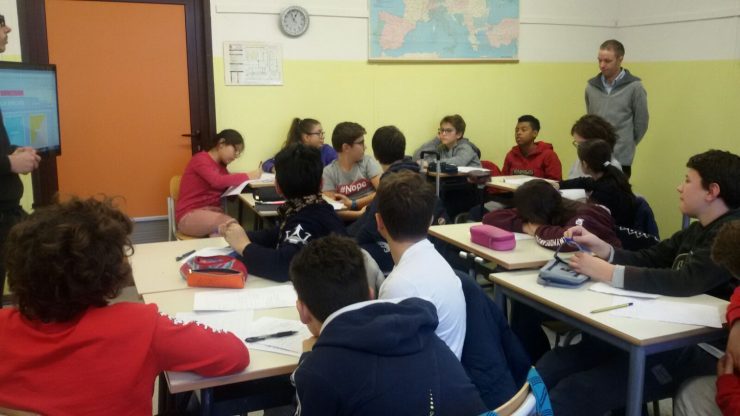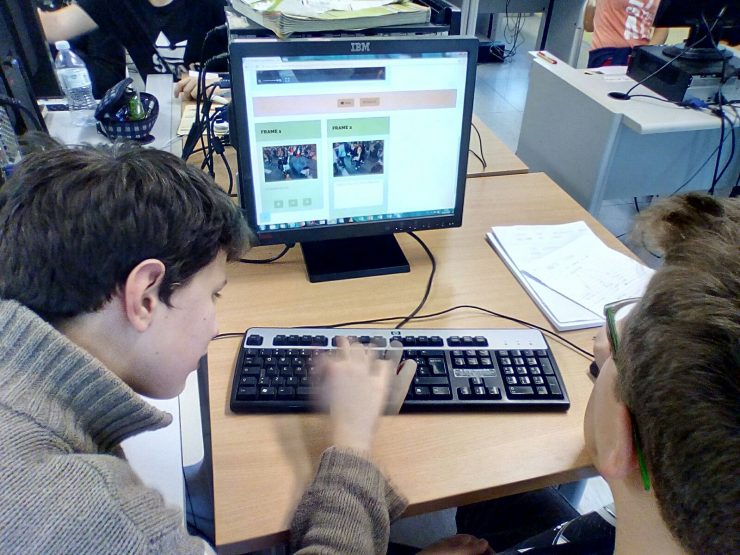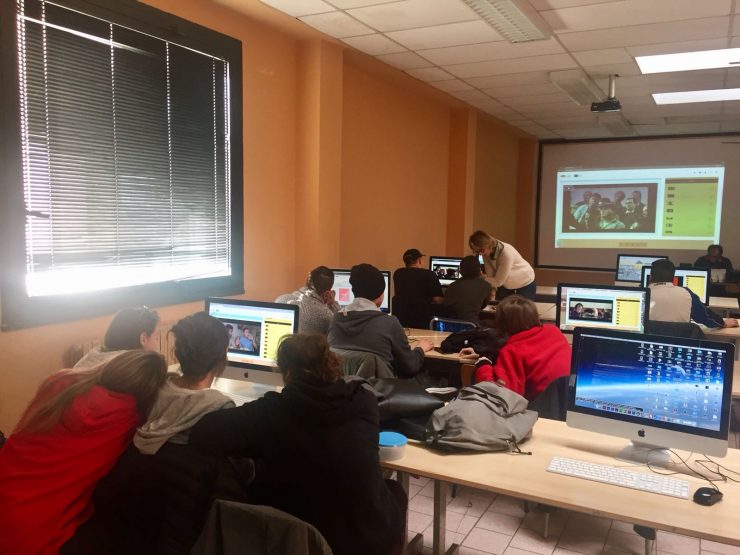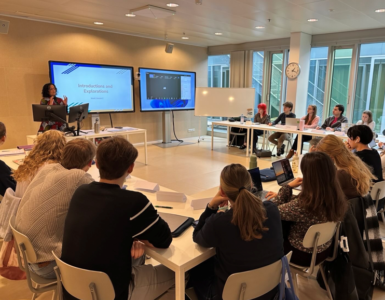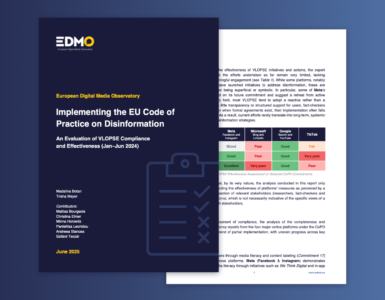The Film Corner is an online interactive user-centered platform for film education for school students aged 11-18 and their teachers, with the general purposes of increasing awareness & appreciation of film and increasing film knowledge & skills among students. The Film Corner project has been developed since 2016 by Fondazione Cineteca Italiana (Milan, Italy) in collaboration with a consortium of partners including: Jugoslovenska Kinoteka, the Serbian national film archive (Belgrade, Serbia), The Nerve Centre (Derry, Northern Ireland), The Film Space (London, UK), The University of Milano-Bicocca (Milan, Italy), Kino Otok (Ljubjana, Slovenia) and the Georgia National Film Centre (Tiblisi, Georgia). The Film Corner project is co-financed by the Creative Europe programme promoted by the European Commission.
The main focus of The Film Corner platform is on a critical approach to film language and to film as an art form; and to a creative approach to film and to filmmaking. The Film Corner platform is accessible for free and is already available in Italian, English, French and Serbian.
The Film Corner platform includes:
• 2 sections, called “studios”
• 6 didactical paths
• 15 interactive tools
• a selection of more than 150 extracts from classic and contemporary films.
Two sections of the platform were developed in the first edition of the project. In the second edition, called “The Film Corner Reloaded – A cultural approach” a third section of the platform will be developed. The first two sections were dedicated to a critical approach to film language and to film as an art form and to a creative approach to film and to filmmaking; the new section of the platform will be dedicated to an interdisciplinary and cross-curricular approach to film education centered on the main topic of film and its relationships with other subjects, arts and topics. Through this third section of the platform, the project aims to provide teachers with online tools that support curricular outcomes through a set of didactical resources which use film as a cross-cutting instrument to foster connections throughout the school curriculum.
Methodological Framework
The participatory approach of the project is reflected in its methodology. The learner is not just expected to to answer questions according to their understanding of content. Students are invited to develop an active approach towards curricular knowledge in order to foster a process of active learning. In this pedagogic environment the role of the teacher is strategic: they are a facilitator, someone who follows and coordinates the work in class with the students.
The project also seeks to identify innovative methodologies around the use of film in the classroom. First of all, films will be considered as a whole and as extracts, according to Alain Bergala’s “FMR-Fragments mis en relations” approach that consists of the creation of a pedagogical pathway based on a selection of extracts from film and audiovisual sources (A. Bergala, L’Hypothèse Cinéma, Editions des Cahiers du Cinéma, Paris, 2006).
The project also aims at developing innovative methodologies for offline activities that would aim to integrate the platform fostering an interactive approach. The cross-curricular attitude is a core aspect of the platform: it is dedicated to a cross-curricular approach that connects film to other subjects, languages and topics. The platform aims at supporting teachers in working on the curriculum with their students giving them skills and knowledge through an ancillary use of film.
The didactical concept and the general methodological framework of the platform takes inspiration from several best practices.
“A Framework for Film Education in Europe”. The project was developed in 2015 by a wide group of institutions Europe-wide and coordinated by the BFI and consists of a general benchmarking analysis and recognition about film education, its definition and its possible applications. The Film Space (consortium member) had taken place to the project as one of the leading institutions, so the consortium had the chance to share this important and strategic document in order to get to a clearer idea of how the platform could be developed. The two studios of the platform (“The film specific” and the “Creative studio”) have been developed according to the “3Cs”, the key dimensions of film education: the Critical, Creative and Cultural dimensions (“A Framework for film education in Europe”, BFI-British Film Institute, 2015).
Alain Bergala’s book “L’Hypothèse cinéma” (A. Bergala, L’Hypothèse Cinéma, Editions des Cahiers du Cinéma, Paris, 2006). The book was issued in France in 2002 and then translated in most of the countries involved in the project. The book is a very useful overview of crucial aspects concerning film education. The aspect the project has raised inspiration from is the “fragments-put-in-relationship” methodology (Fragments-miss-en-relations) based on the use of fragments of film and audiovisual content, instead of the full text, that is a very suitable methodology especially concerning film literacy and film language pedagogy. The platform has adopted this approach and audiovisual materials is mostly used as fragments.
“Le cinéma cent ans de jeunesse” project: this experimental assisted video-production and film education international program runs since 1995 and is led by the Cinémathèque Française (Paris, France) together with some partners from several countries world-wide. The project has been also taken as an example by previous project at a European level, and The Film Corner project consortium has taken some aspects of this project especially concerning the “Creative Studio” of the platform, that takes inspiration by this project. Especially the format of the “Lumière minute”, invented by the coordinators of Le cinéma cent ans de jeunesse: a film made in the style of the Lumière Brothers, the founding fathers of film. It is technically simple to make – one camera, fixed in position and only live, location sound. No editing is permitted. The challenge for the Director is to place all of the action in front of the camera and tell a compelling story with no technical tools beyond the one camera shot. Each participant will film a minute of material in the manner of the Lumière Brothers. The shot will be from a fixed position, lasting one minute and include the sounds recorded on location at the time of filming. The minutes can be filmed either inside or outside. Chose a place, a subject, a moment and record it, without influencing anything in the shot.
The italian “National program for film education in school”, going back to the end of the nineties, a wide national program led by the Ministry of Education for 2 years nation-wide aimed to introducing film education in schools. The Film Corner platform has taken inspiration from this experience about the structure of the didactical paths that are contained in each studio. In particular, the didactical paths in the “Film specific” Studio, which is inspired to the National plan, and is articulated in framing, editing and sound as three key dimensions of film language in education.
The structure of the platform
The platform has a general structure which is partly a free access one and partly a reserved access one. Since the audiovisual content of the platform (the films) are covered by copyright, we decided to put the interactive section of the platform in a restricted access area (username and password are requested to access this section of the platform), while the public areas of the platform are visible from any user.
In the internal part of the overall structure there is the architecture of the platform which is organized into several sections:
• The courtyard
• The studios
• The didactical paths
• The apps
The courtyard of the platform is a landing page where the logged user ends up as a landing page. In this page it is possible to access the content of the platform organised in 2 sections:
• Studio 1, “Film Specific”
• Studio 2, “Creative studio”
For each studio an explanatory text has been drafted in order to give teachers and students the possibility to share a pedagogical framework on which the testing of the platform would lay on.
– the studio called “film specific” is centered on film language and the main pedagogical outcomes of this studio mainly concern the ability to be critical and to read and understand moving images
– the studio called “creative studio” is centered on creativity and filmmaking and the main pedagogical outcomes mainly concern the ability to be creative towards moving image, to understand the relationship between the linguistic aspects and the free creation of audiovisual content.
The studios are the main directories where didactical paths and apps are. There are 2 studios available in the platform. The choice of those studio lays on the analysis of one of the best practices that has been taken into account for the development of the platform: “A Framework for film education in Europe” (see below for the details about the methodological impact of this best practice).
The choice of those 2 axes of work has been motivated by the target of the project: as this is the first edition of the project and a very initial blueprint of the platform, the consortium partners have agreed on addressing the platform to a group of schools that already had, in their majority, an average level of film education and in which projects and activities on film education had already been developed. This has made the platform in this initial version more understandable to teachers. For this reason the partners agreed on working on aspect related to the specificity of film and haven’t chosen to work on film in its ancillary role in education as a cross-curricular matter that helps teachers working on the curriculum subjects. So this first version of the platform was targeted on already skilled teachers and students with a specific focus on critical and creative skills, excluding the cultural approach, which is the third key dimension of film education according to the Framework.
Since the topics of the two studios were too wide and too heterogeneous, it has been necessary to create a further guidance for the users of the platform in order to give the website a higher pedagogical attitude. It was not enough to create two big spaces related to film language and to filmmaking and put some apps inside of them, it has been necessary to choose some specific aspects of both those huge set of pedagogical content in order to give teachers and students some criteria to test the platform.
6 didactical paths were created, 3 for each studio. For the “Film specific” studio the didactical paths are:
• Framing
• Editing
• Sound
For the “Creative studio” the didactical paths are:
• Warm up
• Storytelling
• Make your own film
In each didactical path of each studio there are 3 apps, except the last one (make your own film) that only has 2 for a total amount of 14 apps in the platform.
In each didactical path the following resources are available:
• An introduction text
• A tutorial section with some examples
• A print/save control panel
• A commentary open space
The Film Corner 2020 testing phase is yet to come
The new edition of the project commenced in December 2018 and runs until November 2020. The platform will be tested by a selection of schools from December 2019 until April 2020. In this phase of the project it will be possible to participate in the testing phase. Further information is available at this link.
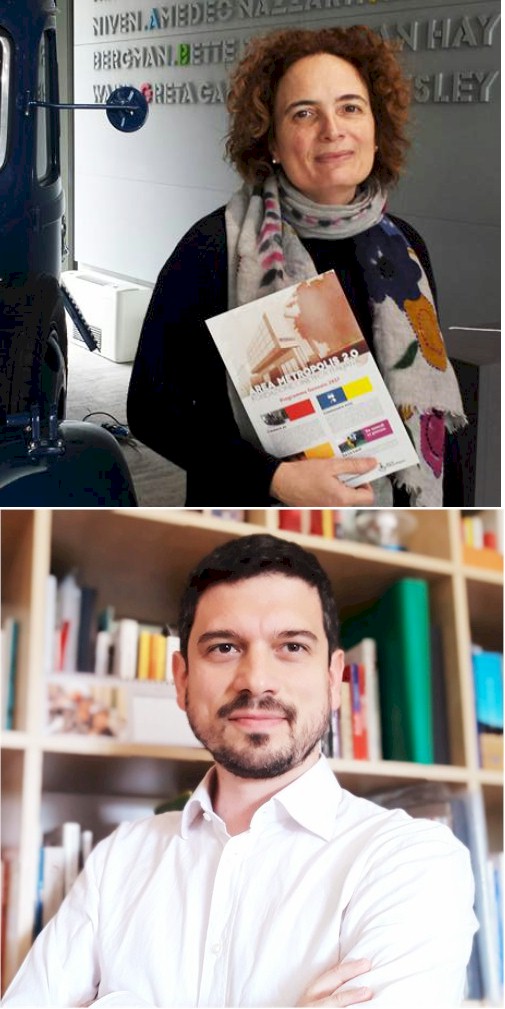
Authors
Silvia Pareti
Project Manager, Fondazione Cineteca Italiana, Milan, Italy
Simone Moraldi
Assistant Project Manager, Fondazione Cineteca Italiana, Milan, Italy


